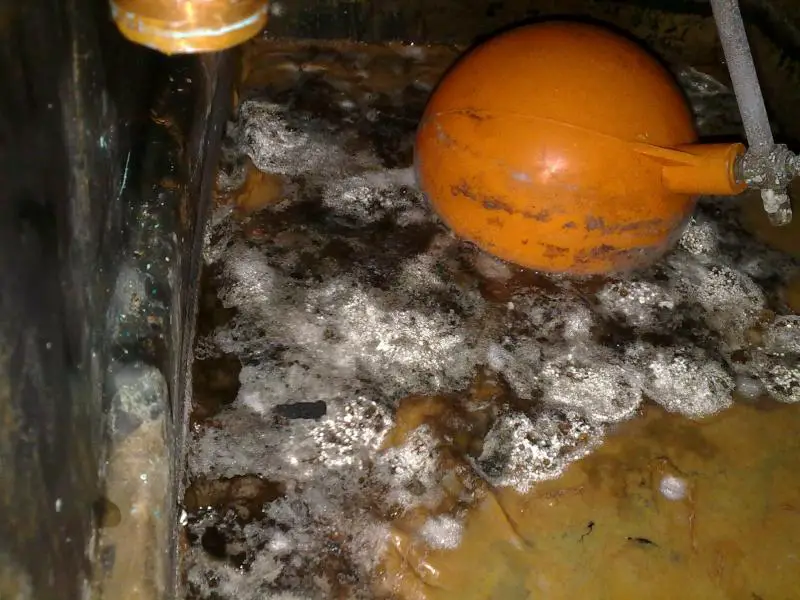Hi,
Just had a look in my header tank and found the following:
The white bits looked like 'mould' and the brown was what I could only describe as like soggy cardboard (in texture) and about 1-2mm thick covering almost 99% of the water surface. Does anyone know what the 'cardboard' like stuff is and/or the cause?
I haven't really touched the system for around a year, at that time I ran some Fernox F3 for a few days, removed the downstairs rad's and flushed, cleaned the header and refilled adding some Fernox F1 (I added the F1 in the header as I was re-filling the system); the system has a Spirotrap fitted which I checked last week, following roughly a years usage there was some magnetite collected (not a great amount) and the water was pretty clear.
The water was clear(ish) under the brown, however, as I've disturbed it since scooping off the top layer of brown/mould I'm waiting for it to settle again to check what really lies beneath before emptying / cleaning the header (currently there's lots of 'bits' in it swishing around).
Just had a look in my header tank and found the following:
The white bits looked like 'mould' and the brown was what I could only describe as like soggy cardboard (in texture) and about 1-2mm thick covering almost 99% of the water surface. Does anyone know what the 'cardboard' like stuff is and/or the cause?
I haven't really touched the system for around a year, at that time I ran some Fernox F3 for a few days, removed the downstairs rad's and flushed, cleaned the header and refilled adding some Fernox F1 (I added the F1 in the header as I was re-filling the system); the system has a Spirotrap fitted which I checked last week, following roughly a years usage there was some magnetite collected (not a great amount) and the water was pretty clear.
The water was clear(ish) under the brown, however, as I've disturbed it since scooping off the top layer of brown/mould I'm waiting for it to settle again to check what really lies beneath before emptying / cleaning the header (currently there's lots of 'bits' in it swishing around).


